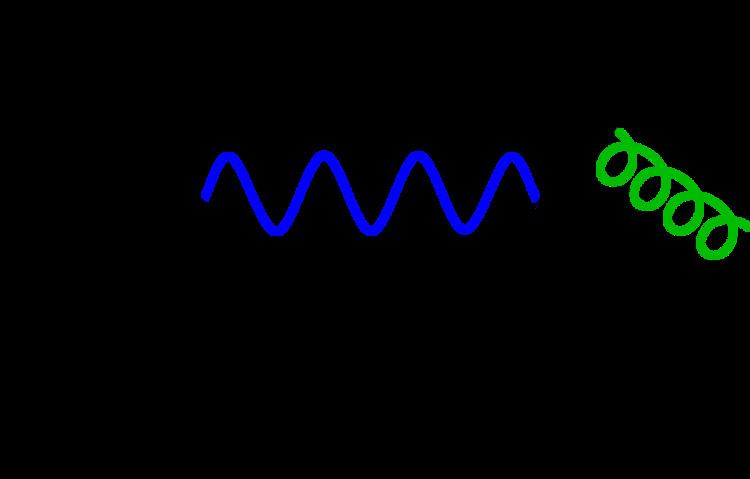 | ||
In quantum field theory, the nonlinear Dirac equation is a model of self-interacting Dirac fermions. This model is widely considered in quantum physics as a toy model of self-interacting electrons.
Contents
The nonlinear Dirac equation appears in the Einstein-Cartan-Sciama-Kibble theory of gravity, which extends general relativity to matter with intrinsic angular momentum (spin). This theory removes a constraint of the symmetry of the affine connection and treats its antisymmetric part, the torsion tensor, as a variable in varying the action. In the resulting field equations, the torsion tensor is a homogeneous, linear function of the spin tensor. The minimal coupling between torsion and Dirac spinors thus generates an axial-axial, spin–spin interaction in fermionic matter, which becomes significant only at extremely high densities. Consequently, the Dirac equation becomes nonlinear (cubic) in the spinor field, which causes fermions to be spatially extended and may remove the ultraviolet divergence in quantum field theory.
Models
Two common examples are the massive Thirring model and the Soler model.
Thirring model
The Thirring model was originally formulated as a model in (1 + 1) space-time dimensions and is characterized by the Lagrangian density
where ψ ∈ ℂ2 is the spinor field, ψ = ψ*γ0 is the Dirac adjoint spinor,
(Feynman slash notation is used), g is the coupling constant, m is the mass, and γμ are the two-dimensional gamma matrices, finally μ = 0, 1 is an index.
Soler model
The Soler model was originally formulated in (3 + 1) space-time dimensions. It is characterized by the Lagrangian density
using the same notations above, except
is now the four-gradient operator contracted with the four-dimensional Dirac gamma matrices γμ, so therein μ = 0, 1, 2, 3.
Einstein-Cartan theory
The Lagrangian density for a Dirac spinor field is given by (
where
is the Fock-Ivanenko covariant derivative of a spinor with respect to the affine connection,
The resulting Dirac equation is
where
